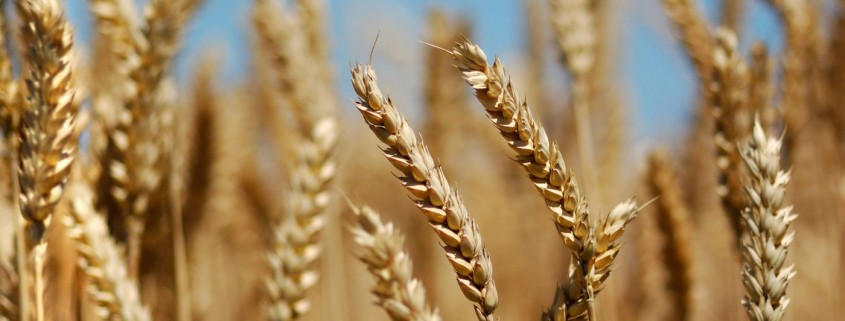Celiac disease – a life without gluten
Coeliac disease (celiac disease) is a permanent form of gluten intolerance of wheat, rye and barley. Question about oat flour, for now, remains open.
Celiac disease is detected at all ages, usually in childhood. Something is more common in females. In Western Europe registered with 1: 100-200, indicating that it is in our country has with about 30 000 to 70 000 inhabitants.
The disease often remains hidden for a long time (nemanifestna), and if it is manifested, it may be typical or atypical.
The main typical symptoms of the disease are: loss of appetite, frequent and copious stool, loss of body weight, enlargement of the abdomen, apathy and lagging behind in growth and development, and atypical persistent anemia, short stature, dental enamel damage, abdominal pain, signs of liver damage, delay in puberty and others.
The diagnosis is established by biopsy of the small intestine mucosa, while serological tests have no diagnostic value but are important in detecting atypical form of the disease and symptom-free.
Symptoms of celiac disease
The most common signs are single or in combination:
- Frequent vomiting and nausea, abdominal pain, bone pain, headache
- diarrhea, profuse, oily and strong smelling stools
- constipation (some people suffer more), swelling
- chronic fatigue, weakness, lethargy, irritability; reduced concentration of the
bloating, cramping and gas in the stomach
- limp muscles, skin sensitivity (burning, tingling, itching)
- a delay in the development of the person, anemia
- decrease in body weight.
How to treat celiac disease?
The strict adherence to diet without gluten, there is a complete disappearance of symptoms without medication. Gluten-free diet provides optimal state of health of the sick, the patient feels better, troubles disappear and physical and mental condition improves. It comes to normalization of the lining of the small intestine, the body absorbs and utilizes nutrients to normalize body weight.
What is gluten and how it works on the body?
Gluten (glue) is a protein molecule two proteins (gliadin and gluten) which are located approximately in equal diameters in the nucleus (endosperm) of wheat and some grains. This is a high protein residue which is very rich in proteins, carbohydrates, calcium and vitamins from group B. It is insoluble in an acid environment (stomach), but are assimilated in the intestine. In addition to the above mentioned gluten is known adverse action and other prolamins: secalin (from rye), hordein (from barley) and avenins (from oats). All four fractions gliadin cause more or less gluten enteropathy (allergy to grains). There is a lysine base diamo-monocarboxylic acid is essential, which in most proteins to four (in particular in the basic nuclear proteins, histamine). In some people causes gluten enteropathy syndrome, poor intestinal absorption. Gluten creates a problem with digestion, since its network difficult to interpret, and only partially digested. If the food is not enough chewed gluten, a major cause of intestinal inflammation and allergies. Gluten weakens the walls of the small intestine, acting on small fringes (such as files) that are on the mucosa of the small intestine which they adopt nutrients. In this way, the villi have a reduced ability to absorb nutrients. Due to the irritation of damaged intestinal, body forms a protective layer of mucus that makes more difficult the passage of nutrients through the intestinal wall. Both gluten, especially wheat, causing typical disease of poor digestion. When the intestinal wall is damaged, it becomes permeable for larger molecules than normal, and partially digested proteins and bacterial toxins enter the bloodstream causing allergy and weakening of the immune system. Mucus created by gluten, except in the small intestine, can be found in the head. People with these clusters cannot be waived, are sensitive, explosive, in the case of allergies marrow are favor of epilepsy and mental illness. Later on the accumulation of phlegm (mucus) may have resulted, and deafness. Because of a metabolic disorder, wheat starch in the organism mainly converts them into body fat, instead of the energy. In addition to wheat and processed foods and many other foods often contain added gluten.
The basis of treatment of this disorder makes gluten-free diet. If you are on a strict diet, these people are healthy, otherwise a potentially severe patients.
Gluten-free diet can therefore prevent many complications of diseases such as stunted growth and development, anemia, damage to teeth, changes in behavior and personality development, abdominal pain and other digestive disorders, chronic fatigue feeling, infertility of childbearing and various malignancies in the later years of life.
What is gluten-free diet
This diet involves the exclusion of all foods that contain or may contain gluten. It is important to note that small amounts of gluten can be harmful, unfortunately on the labels of food products is often limited company ( “hidden gluten”).
“Hidden gluten” can be found in all the industrial-meat products (sausages, sausages, meat cold cuts, pates, salami, ham …) then kebabs, burgers, candied and dried fruit, various frozen ready-made food products, fruit yogurt, puddings, fruit syrups, ice cream, and even candies, chocolates, etc.
Respect strict gluten-free diet requires additional material costs, which significantly increase the cost of living. Also, the determination of serological parameters of the disease, which are very important in its detection and monitoring, in most cases not covered by compulsory insurance.
What if you suspect that you have this disorder?
Contact the Serbian Association of celiac disease. This association represents a humanitarian and non-profit organization that works in the public interest. It was founded by the parents of sick children with the cooperation and support of our eminent experts. At the request of Association of Pediatrics Section of Serbian Medical Society formed an Advisory Board made up of 30 associations of paediatricians from all regions of the Republic of Serbia dealing with this problem and that, in this field, are recognized and well-known experts.
Grains Gluten
There are varieties of grains that naturally contain gluten and can be used instead of those that contain it. The grains that naturally contain gluten include, rice, millet, buckwheat, amaranth, quinoa and tef.
Preparation of bread, candy and other products made from gluten-free cereals, differs from the preparation of the same grain products that contain it, because it is gluten sticky proteins which facilitates firing. When grains that naturally contain gluten, note that they are not contaminated grains that contain it (eg. During the milling, transport or storage). To be sure, I use the grain flour labeled “gluten free” or recommended by the Celiac Society.
Safe Foods
There are numerous products that naturally do not contain gluten and are safe to use: the aforementioned types of cereal gluten, potatoes, fruits legumes, tapioca, chestnuts, milk and dairy products, meat, fish, eggs, vegetable oil, fruit and vegetables.
In addition to products that naturally do not contain gluten, there are dietary products bearing the label strikethrough class wheat, which ensures that the product does not contain gluten and that complies with applicable law.
Risk foods
are all-risk foods that may contain gluten as an ingredient or supplement. For example, ready meals, meat products, soy sauces, ice cream. It is especially important to read the list of ingredients in these foods, since gluten must be listed in the ingredients of the product. The risk group includes foods that are possibly contaminated with gluten during production.
Prohibited foods
are forbidden all kinds of grains and foods that contain gluten, wheat, rye, barley, spelled, kamut, winter spelled, emmer, bulgur, couscous, triticale. Tooth should also be avoided, because it is often contaminated with gluten.



Leave a Reply
Want to join the discussion?Feel free to contribute!